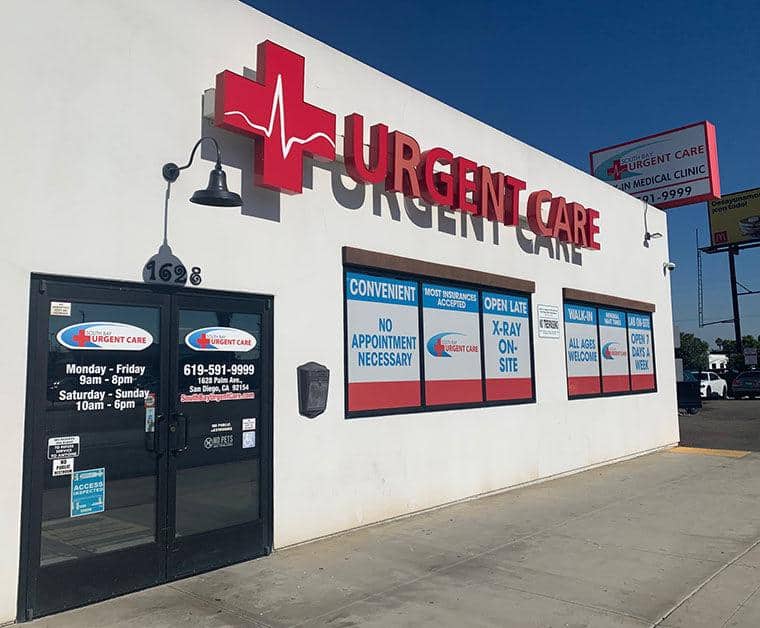

Photo: South Bay Urgent Care has seen an increase in gastrointestinal issues during spikes in transboundary flows. Photo by Alessandra Selgi-Harrigan
An increase in gastrointestinal issues has led Dr. Matthew Dickson and Dr. Kim Dickson of South Bay Urgent Care to worry about what is in the air residents are breathing and the water they are drinking. The clinic, which sees patients from many areas of South Bay — Imperial Beach, Coronado, National City, San Ysidro, and Otay — has noticed a trend in gastrointestinal problems and respiratory issues among patients, which coincide with spikes in transboundary pollution. But the most interesting fact is that patients have not been in contact with the ocean since beaches are closed in Imperial Beach and Coronado. Instead, there is a distinct possibility that the air South Bay residents are breathing is making them sick.
Dr. Kim Prather of Scripps Institution of Oceanography has conducted a study that shows aerosolized particles of transboundary pollution in the waves can travel off the beach into the air residents breathe. Prather and other researchers released a study last March in which they noticed aerosolized pathogens when dye was released into the ocean. The dye showed that if the water pollution gets trapped in the surf zone, when the waves crash it releases some of the pollution into the air.
The Dicksons have been in touch with Prather to see if there is a connection between the times when there are spikes in pollution and overlay that information with illnesses reported at the clinic.
Some of the symptoms seen by South Bay Urgent Care are vomiting, diarrhea, and abdominal cramping, which last for a week or two. Some of the patients at the clinic have agreed to be tested for E. Coli. At first, patients were asked to give a stool sample, which was not well received. The clinic is now using another test, done with a cotton swab, which has shed some light on the issue. “We have started to see positive E. Coli after rain,” said Dr. Matthew Dickson. The testing has been challenging, he explained. First, the patients have to consent, and second, the insurance has to pay for the test, which has a price tag of $300. Fortunately, Dickson said about 75% of health insurances pay for this test. “We’re going to try to do it for the most people we can, just like COVID, make it accessible and easy…get good data. If we can show people are getting sick without getting in the ocean, how does it get from the ocean to us?” said Matthew Dickson.
The Dicksons have been in touch with the Health Department but have not received a good response about their concerns. Matthew Dickson said he would like to see the department involved in this issue to get more resources, more testing, and connect with their epidemiologists. He was told the department looks at 911 calls and hospitalizations, and they have not seen an increase in any of the two factors due to gastrointestinal issues. “Most people don’t go to the hospital [for those issues]. They get on with their lives and deal with it. Some people go to urgent care or their primary,” he said.
Dickson said the type of E. Coli seen at the clinic is the more aggressive one, similar to what was discovered at a local restaurant recently. This aggressive E. Coli is dangerous and can be fatal to the old and the young, people with poor immune systems, and cancer patients. Fortunately, the Dicksons’ patients have recovered and were not hospitalized.
Dr. Matthew Dickson wonders about the commonality between people who go to his clinic from different […]
Full article: www.imperialbeachnewsca.com
Clean water is essential for life, yet millions of Americans unknowingly consume contaminants through their…
Human brains contain higher concentrations of microplastics than other organs, according to a new study, and the…
From the Office of the Governor: In anticipation of a multi-day, significant atmospheric river in Northern California,…
From Governor Newsom: Scientists, water managers, state leaders, and experts throughout the state are calling…
Photo: A harmful algal bloom in Milford Lake, Kansas, made the water appear bright green.…
An expanded plastic foam coffee cup is at a donut shop in Monterey Park, California.…